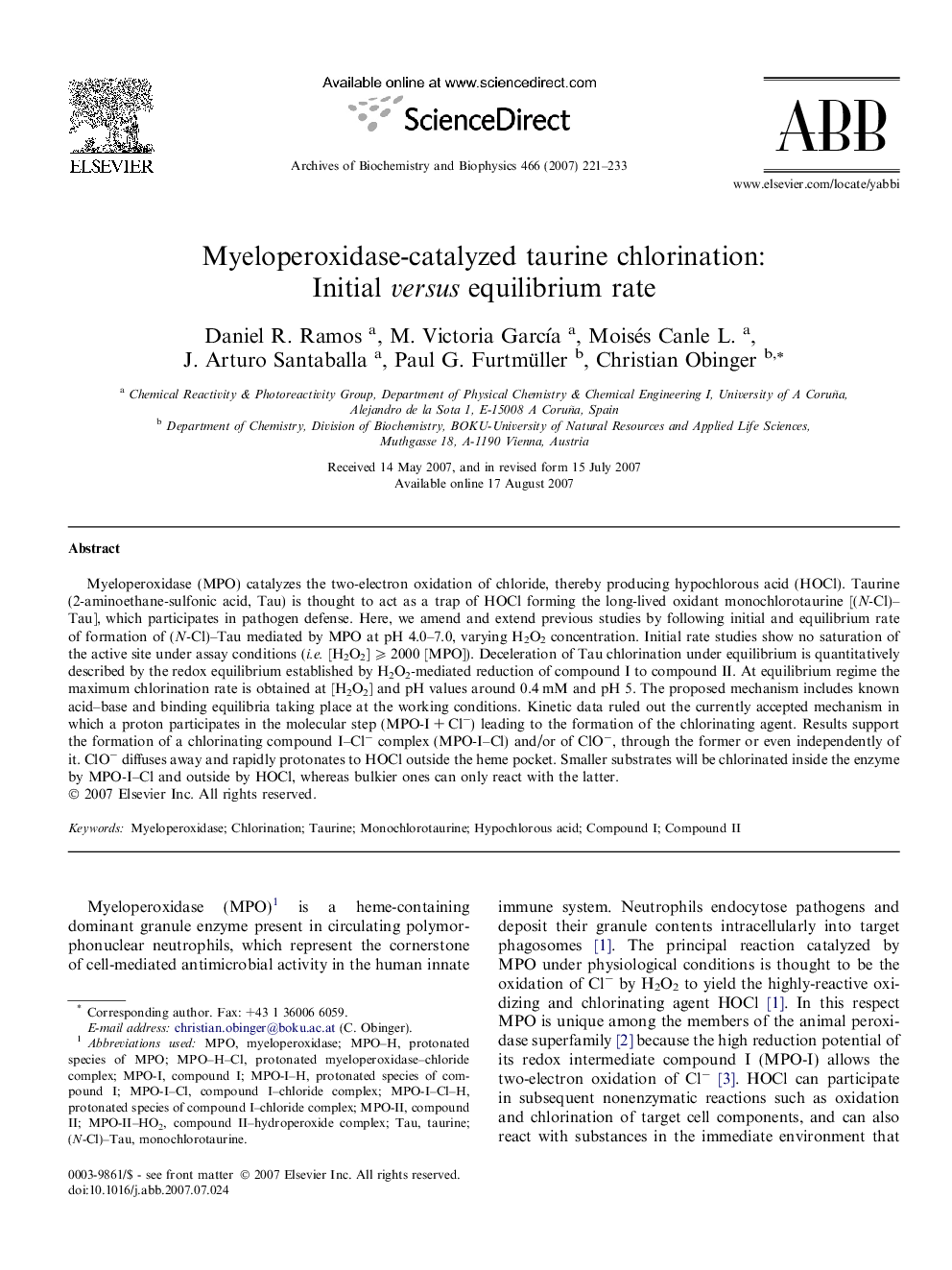| Article ID | Journal | Published Year | Pages | File Type |
|---|---|---|---|---|
| 1926961 | Archives of Biochemistry and Biophysics | 2007 | 13 Pages |
Myeloperoxidase (MPO) catalyzes the two-electron oxidation of chloride, thereby producing hypochlorous acid (HOCl). Taurine (2-aminoethane-sulfonic acid, Tau) is thought to act as a trap of HOCl forming the long-lived oxidant monochlorotaurine [(N-Cl)–Tau], which participates in pathogen defense. Here, we amend and extend previous studies by following initial and equilibrium rate of formation of (N-Cl)–Tau mediated by MPO at pH 4.0–7.0, varying H2O2 concentration. Initial rate studies show no saturation of the active site under assay conditions (i.e. [H2O2] ⩾ 2000 [MPO]). Deceleration of Tau chlorination under equilibrium is quantitatively described by the redox equilibrium established by H2O2-mediated reduction of compound I to compound II. At equilibrium regime the maximum chlorination rate is obtained at [H2O2] and pH values around 0.4 mM and pH 5. The proposed mechanism includes known acid–base and binding equilibria taking place at the working conditions. Kinetic data ruled out the currently accepted mechanism in which a proton participates in the molecular step (MPO-I + Cl−) leading to the formation of the chlorinating agent. Results support the formation of a chlorinating compound I–Cl− complex (MPO-I–Cl) and/or of ClO−, through the former or even independently of it. ClO− diffuses away and rapidly protonates to HOCl outside the heme pocket. Smaller substrates will be chlorinated inside the enzyme by MPO-I–Cl and outside by HOCl, whereas bulkier ones can only react with the latter.
